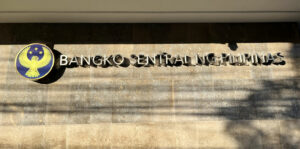




Quarterly Economic Growth Release: More BSP cuts to come
 DOWNLOAD
DOWNLOAD

Monthly Economic Update: Fed catches up
 DOWNLOAD
DOWNLOAD

Inflation Update: Steady and mellow
 DOWNLOAD
DOWNLOAD


BSP may trim policy rates by 50 bps this year

The Bangko Sentral ng Pilipinas (BSP) may cut by 50 basis points (bps) this year and 100 bps in 2025 amid easing inflation, ANZ Research said, adding the central bank still needs to be cautious in the coming months.
ANZ Research said in a report dated Jan. 17 that the faster-than-expected deceleration of inflation in December should prompt the BSP to deliver rate cuts this year, earlier than previously projected.
It said the BSP is likely to begin rate cuts in the fourth quarter, instead of its earlier expectation of the first quarter of 2025.
“We are penciling in 50-bp cut in 2024 and another 100 bps in 2025. Our new terminal rate forecast of 6% by yearend 2024 (that is, real rate at 2.5%) will also manage external imbalances,” ANZ Research said.
The BSP kept its policy rate steady at a 16-year high of 6.5% at its December meeting. This was after the Monetary Board tightened rates by 450 bps from May 2022 to October 2023 to help bring down elevated inflation.
Philippine headline inflation slowed to 3.9% in December from 4.1% in November and 8.1% a year ago. This was the first-time inflation returned to within the 2-4% target in nearly two years.
Still, full-year inflation stood at a 14-year high of 6% in 2023. This was above the 5.8% in 2022 and marked the second straight year that average inflation breached the BSP’s 2-4% target.
ANZ Research said the 3.9% inflation print in December should be comforting to the BSP, although it will require additional evidence it will stay within the 2-4% target band in the coming months before it considers rate cuts.
BSP Governor Eli M. Remolona, Jr. earlier said there is still a need to keep policy settings tighter for longer until inflation expectations are firmly anchored. The BSP also stands ready to adjust interest rates as necessary should risks further escalate.
The BSP will have its first policy review for this year on Feb. 15.
“The other obstacle for a policy pivot is the trade deficit, which widened anew in October and November 2023,” the research firm said.
The Philippines’ trade deficit widened to a seven-month high of $4.69 billion in November, wider than the revised $4.39-billion gap in October, latest data from the local statistics agency showed.
For January to November, the trade deficit narrowed to $48.98 billion from the $53.72-billion gap a year earlier.
“With the Marcos administration retaining its commitment towards capex spending even amid fiscal consolidation, import demand may continue to improve through 2024. This may deepen external imbalances if exports do not pick up significantly,” ANZ said.
It said lower interest rates in the US will enhance financial inflows to the Philippines and support the peso, which would mitigate the impact of a likely wider trade deficit this year, the research firm said.
“Our current forecasts are for the US Fed to deliver 100 bps of rate cuts this year, with the first rate cut materializing in the third quarter,” ANZ said.
The US Federal Reserve hiked borrowing costs by 525 bps from March 2022 to July 2023, bringing its benchmark overnight rate to a range between 5.25% and 5.5%.
Murray Collis, chief investment officer for fixed-income Asia ex-Japan at Manulife Investment Management (MIM), said the BSP is expected to mirror the Fed’s policy easing starting in the second quarter.
“The December 3.9% print helped the view that the BSP is done [hiking rates], so the focus has now shifted to policy easing. With the expected five rate cuts from the Fed, and as inflation continued to moderate, we expect the BSP to follow suit to maintain that interest rate differential,” he said in an online briefing on Wednesday.
Mr. Collis said the Philippine central bank remains hawkish and reiterated “monetary policy will likely continue to be tight on the back of these inflation risks.”
MIM sees Philippine headline inflation to average in the low 4% range this year.
For 2024, the BSP sees average inflation at 3.7%. — Keisha B. Ta-asan with inputs from AMCS
This article originally appeared on bworldonline.com





 By BusinessWorld
By BusinessWorld